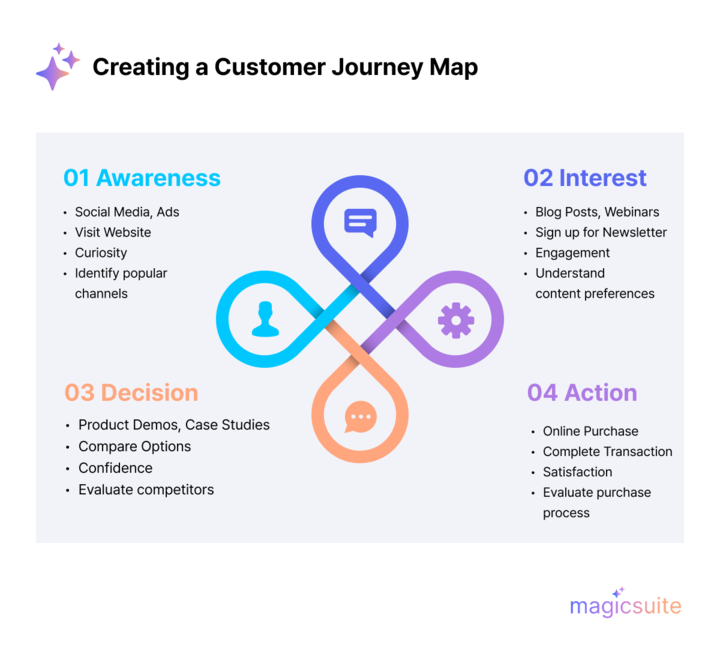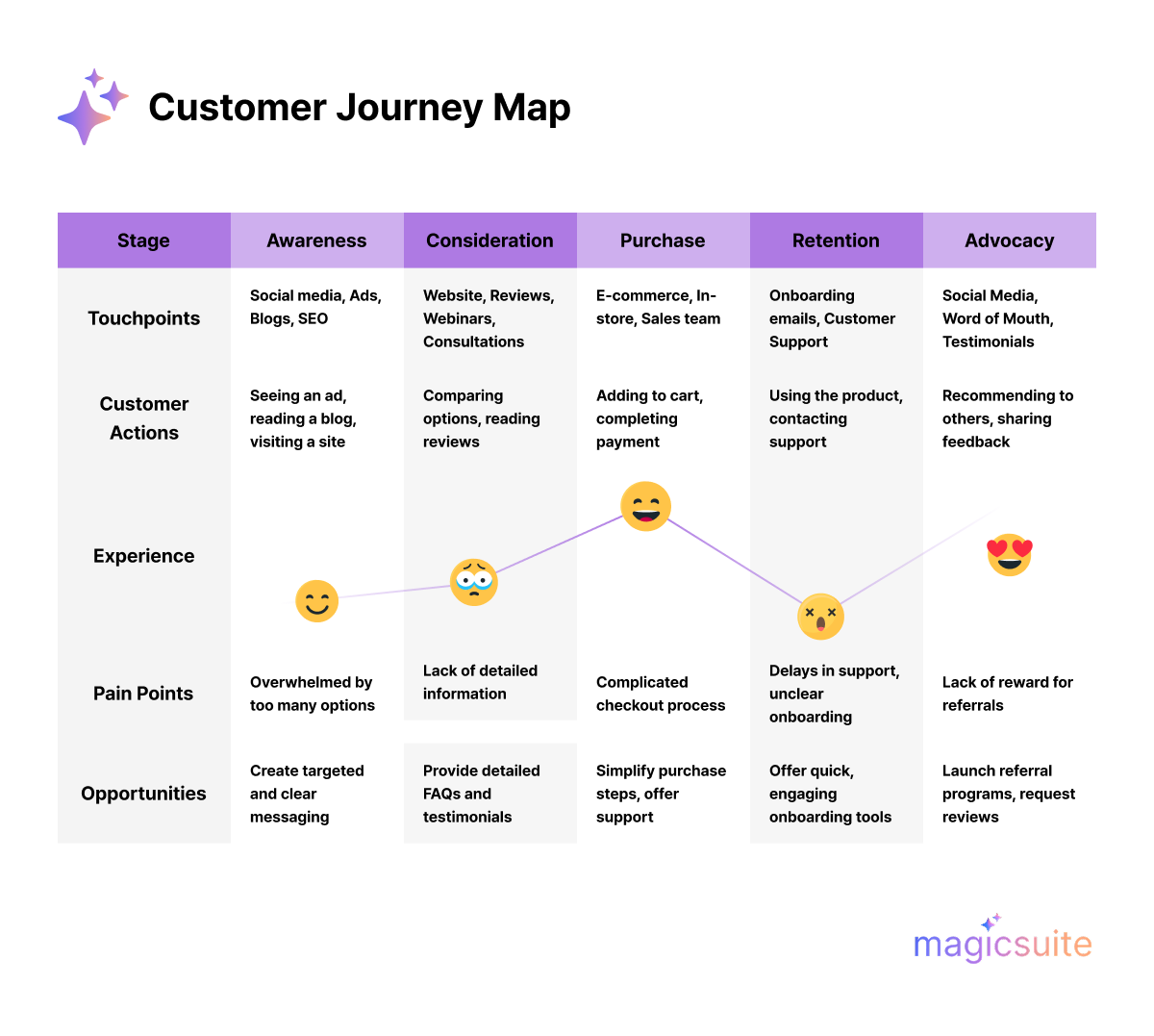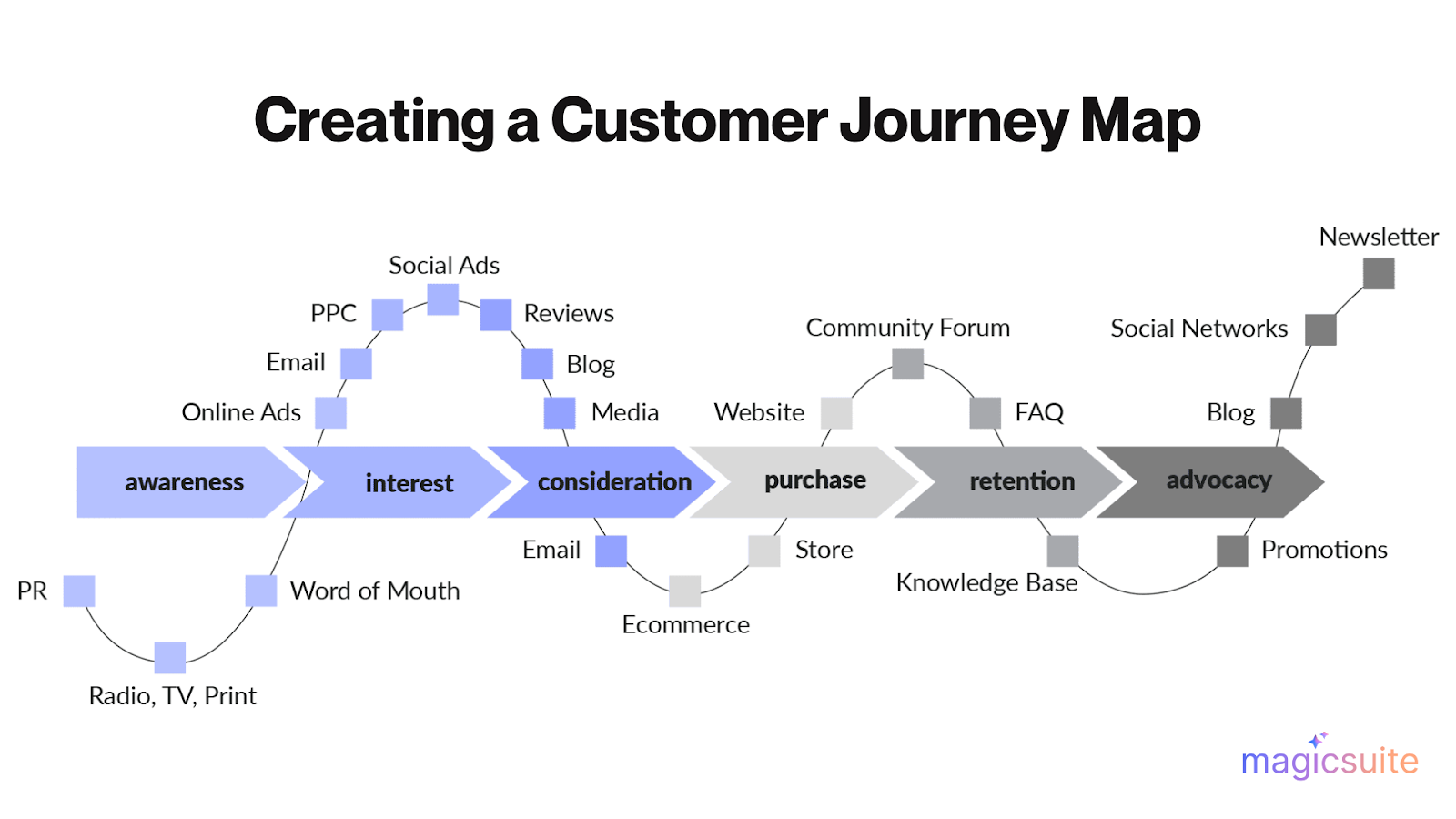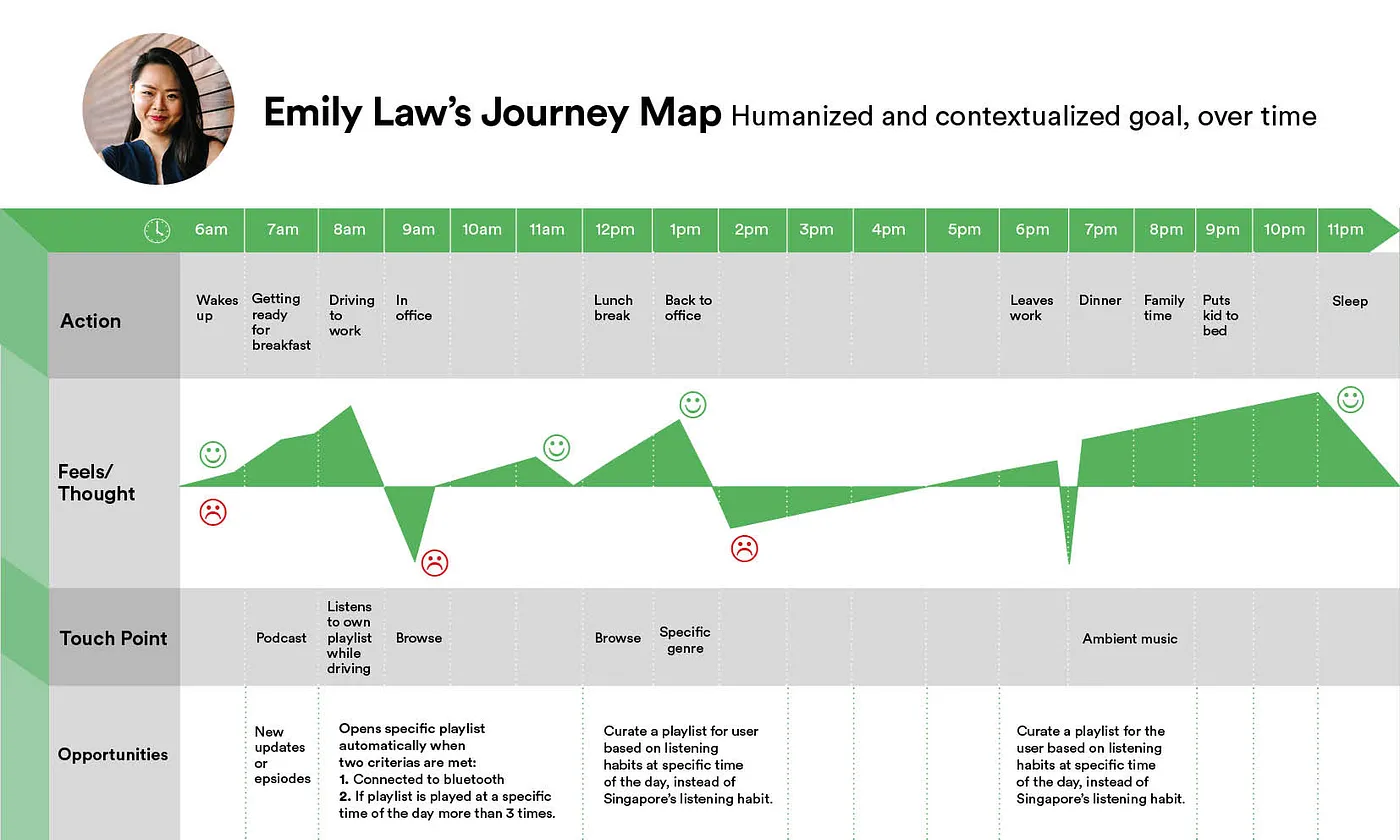Learn what a customer journey is, its 5 key stages, benefits, and how to create a journey map to boost loyalty, improve CX, and increase conversions.

In today’s competitive market, knowing how your customers interact with your brand is more important than ever. This is where the concept of the customer journey comes into play.
The customer journey is a series of steps — starting with brand awareness before a person becomes a customer — that leads to a purchase and ultimately to customer loyalty.
Whether you're running a small business or managing a global brand, understanding each step your customer takes can help you improve experiences, increase loyalty, and boost sales.
In this guide, we’ll explore:

The customer journey refers to the complete experience a person has when interacting with your brand—from the moment they first hear about you to the time they make a purchase and beyond.
It includes every touchpoint, such as:
Understanding this journey helps businesses see things from the customer’s point of view. It’s not just about selling a product—it’s about building a relationship.
A customer journey map is a visual tool that shows the steps a customer goes through at each stage. Think of it as a story told from the customer’s perspective. It helps you answer questions like:
Creating a customer journey map allows you to spot pain points and improve the overall experience of engaging with your company. It helps you understand their needs, emotions, and behaviors at each stage.
Each stage includes touchpoints, which are interactions with your brand (e.g., social media ads, emails, ai chatbots) across multiple channels. Actions, motivations, questions, and pain points differ at each stage and touchpoint.

Unlike the buyer's journey, which ends with a purchase, the customer journey extends beyond the purchase and encompasses how customers interact with your product and how they share it with others. The five key stages are:
In this phase, your target audience becomes aware of your brand and products. They are seeking information or solutions to a problem via social media and search engines. The focus here is on answering their questions and building trust, rather than making hard sales.
Customers begin to consider your brand as a solution. They compare your products to competitors and alternative solutions. Businesses need to position their solution as a better alternative, focusing on product features that solve problems.
Customers are ready to make a buying decision. It's crucial to persuade them to buy from you by providing pricing information, comparison guides, and abandoned cart email sequences.
The journey doesn't end with a purchase. The focus shifts to keeping customers and driving repeat business. Strategies include regular email outreach, coupons, sales, and exclusive communities to encourage loyalty.
Customers are delighted with your products and services, and they actively share their positive experiences with friends and family. This involves encouraging referrals through bonuses, loyalty programs, and special deals for active customers.
Also read: How Artificial Intelligence Elevates Customer Experience
Understanding the customer journey helps shed light on your target audience’s expectations and needs, making you more competitive. Specifically, it helps to:

Creating a customer journey map doesn’t have to be complicated. Here’s a simple step to get started:
Ask yourself:
A persona is a fictional character that represents your ideal customer. Include details like:
This helps you understand who you’re mapping the journey for.
List all the ways a customer interacts with your brand, such as:
Include both online and offline touchpoints.
Break down the journey into the five key stages:
For each stage, note what the customer is doing, thinking, and feeling.
Look for areas where customers may get frustrated or drop off. These could include:
Fixing these issues can lead to big improvements.
Your customer journey map should evolve as your business grows. Review and update it regularly to keep it accurate.
To get the most out of your customer journey mapping, keep these tips in mind:
Understanding customer journeys is best illustrated through real-world applications. Here are a few examples:

Spotify, a popular audio streaming service, used customer journey mapping to improve its music-sharing experience. By mapping the user experience from opening the app to sharing a song, they identified pain points and addressed them to encourage more music sharing.
This involved understanding what customers were engaging with, doing, thinking, and feeling at each touchpoint, leading to higher customer satisfaction and advocacy.
When launching their Personal Pro product, TurboTax mapped the customer journey from website entry (consideration phase) to tax filing completion. This enabled them to identify and address customer pain points, resulting in a smoother and more satisfactory tax preparation process.
Amazon's customer journey is highly complex, but it can be broken down into digestible parts. Their journey mapping focuses on the conversion funnel, using their products to guide users through the sales process.
They track key metrics, including impressions, reach, click-through rates, add-to-cart rates, purchase assists, conversion rates, and repeat purchase rates, to optimize the customer experience and maximize engagement.
Learn more on: 10 Lessons Businesses Can Learn from Amazon Customer Service
A common scenario in e-commerce involves mapping the checkout process. This helps identify potential barriers, such as a lengthy account creation process. Understanding customer frustrations at each step enables businesses to implement solutions, such as guest checkout options, that enhance the overall customer experience and reduce cart abandonment.
The customer journey is the full experience a person has with your brand, from first contact to post-purchase interactions. It includes all the steps, emotions, and decisions along the way.
A customer journey map is a visual representation of the steps a customer takes when interacting with your business. It helps you understand their needs and improve their experience.
Customer journey mapping helps you identify pain points, improve satisfaction, and increase conversions. It gives you a clear view of what your customers go through and how to better serve them.
Start by defining your goals, creating customer personas, listing touchpoints, and breaking down the journey into stages. Use tools like Miro or Lucidchart to visualize the map.
You should review and update your customer journey map regularly—at least once every 6 months or whenever you launch a new product, change your strategy, or notice shifts in customer behavior.
Understanding the customer journey is a game-changer for any business. It helps you see your brand through your customers’ eyes and make smarter, more customer-focused decisions. By creating a clear and detailed customer journey map, you can:
Start mapping your customer journey today and unlock the full potential of your business.

Hanna is an industry trend analyst dedicated to tracking the latest advancements and shifts in the market. With a strong background in research and forecasting, she identifies key patterns and emerging opportunities that drive business growth. Hanna’s work helps organizations stay ahead of the curve by providing data-driven insights into evolving industry landscapes.